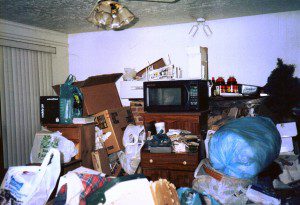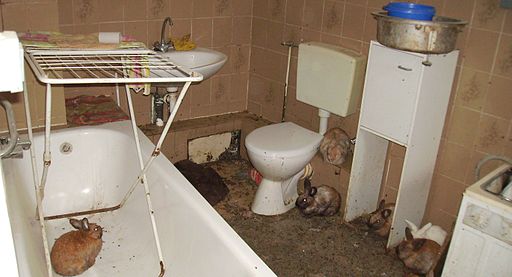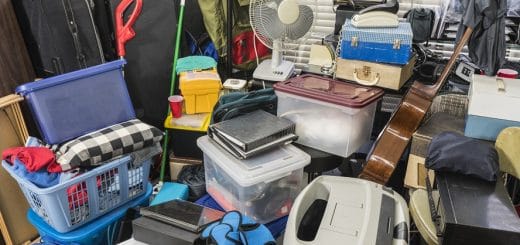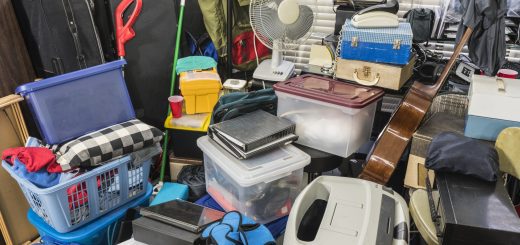Fire Safety Tips for Homes Affected by Hoarding
Hoarding is a serious issue that results in dangerous clutter and unsanitary conditions in a home. These conditions increase the risk of injury and other health issues, as well as the risk of fires. Those who struggle with hoarding disorder have an inability to part with any collected objects and many commonly hoarded objects like newspapers and old furniture are flammable. Extreme clutter not only increases the risk of a fire, but also allows fires to spread quickly which can result in devastating damage and even put the lives of those in the home in danger. If you know someone who is affected by hoarding, it is important to help the affected individual understand the risk of a fire and take certain actions in the name of fire safety.
What is Hoarding?
Hoarding is a condition in which the individual affected has difficulty throwing away or removing anything from their home, leading to a buildup of excessive clutter. This condition is classified as a mental disorder because there is often an underlying issue with depression or anxiety that makes it difficult for hoarders to part with anything in their home. Because of this, people who struggle with hoarding must be approached delicately to address the issue. Hoarding cleanup should only be done when the affected individual agrees to the cleanup.
What are the Risks of Hoarding?
Hoarding behaviors create dangerous living conditions with many inherent risks. The following are the main risks associated with hoarding:
- Poor indoor air qualityIndoor air quality (IAQ) refers to the condition of the air ... More: The buildup of dust and odors, and the decay of hazardous materials greatly diminishes the indoor air qualityIndoor air quality (IAQ) refers to the condition of the air ... More. People in the home may experience trouble breathing or respiratory issues as a result.
- MoldMold is a type of fungus that grows in damp or humid conditi... More and mildewMildew is a type of fungus that grows on damp surfaces, typi... More: Spoiled food and excess moisture increase the risk for moldMold is a type of fungus that grows in damp or humid conditi... More and mildewMildew is a type of fungus that grows on damp surfaces, typi... More growth. MoldMold is a type of fungus that grows in damp or humid conditi... More causes a bad odorAn odor is a smell, often detectable by the human nose, whic... More within the home and puts those who are exposed in danger of health issues.
- Sanitation issues: The accumulation of garbage, spoiled food, and urine or feces from humans and animals creates dangerously unsanitary conditions. These conditions increase the risk of contaminationContamination is the presence of harmful or unwanted substan... More and disease.
- Plumbing issues: Within the excessive clutter, items may fall into drains and toilets, leading to clogs, overflows, and sewageSewage is wastewater containing biological and chemical cont... More backups.
- Building safety issues: Extreme clutter can block windows and doors, making it impossible to escape in an emergency. Technicians may have difficulty providing maintenanceMaintenance is the routine care, inspection, and repair of a... More for HVAC systems, plumbing, and other systems in the home. Pests attracted by the clutter such as rats may chew electrical wires and cause electrical failures or fires.
- Pest infestations: Spoiled food within the clutter attracts pests such as rats, flies, cockroaches, and other animals. When pests invade, they contribute to unsanitary conditions with their droppings and may cause damage to the home.
- Injuries: Extreme clutter blocks pathways, increasing the risk of injuries from tripping and falling when moving through the home. Stacks of cluttered items may fall onto people and cause injuries.
- Fire risks: The clutter in the homes of hoarders typically contains flammable and combustible materials, increasing the risk of fire. Fires also spread fast by quickly burning through the clutter.
How Does Hoarding Increase the Risk of Fires?
When people think of hoarding, the increased risk of a fire is usually not the first issue that comes to mind. However, the clutter buildup that results from hoarding behaviors drastically increases the risk of fires. The clutter may trigger a fire from a nearby heat source and the fire will spread rapidly through the clutter, making it difficult to contain. Those within the home may have difficulty escaping from the fire which increases the risk of injury or death.
Hoarding directly increases the risk of fires in the following ways:
- A buildup of flammable items near the stove or oven can cause a fire.
- Clutter buildup near heating units can catch fire, especially if a heating unit tips over into the clutter.
- The clutter buildup could damage electrical wires or invite pests that chew on wiring.
- Burning candles in a cluttered home is a major fire risk.
- The clutter can block exits in a home which is extremely dangerous if there is a fire.
The other issue to consider is how the clutter in a hoarder’s home will affect first responders in the event of a fire. Firefighters may face the following obstacles when responding to a fire:
- Clutter can restrict access through the home which may impede their ability to get to a fire.
- Blocked exits may trap them in the home.
- Falling objects can cause injury.
- The home is more likely to collapse under the weight of the clutter which can trap or seriously injure firefighters.
- The clutter makes rescuing people and pets much more difficult and dangerous.
Fire Safety Tips for a Hoarder’s Home
People affected by hoarding do not often reach out for help on their own. Trusted friends and family members must reach out to those affected and encourage them to make changes that help prevent fires. The risk of fires is elevated in hoarder’s homes and those within these homes are often killed when a fire occurs. Reaching out to loved ones who hoard and helping them safeguard their home from fires can save their lives.
If you know someone who hoards, the following tips can help you help the individual prevent fires in their home:
- Discuss personal safety with the individual and try to avoid talking about the clutter. Make sure you show empathy for the individual and do not call it hoarding unless they do first.
- Make sure they keep cooking areas free from clutter and clear the areas around heaters and electrical equipment.
- Encourage them to avoid collecting combustible materials like newspapers, mail, and cardboard in one place.
- Assist the individual in coming up with a fire escape plan and practice it. Help them understand that they need to keep clear paths to the exits of the home at all times.
- Make sure the home has working smoke detectors and test them often.
- Talk to the local firefighters to discuss your concerns about the affected individual. They can probably also refer you to other community resourcesResources include tools, personnel, equipment, and materials... More that can help.
How to Handle Hoarding Fires
If a fire occurs in the home of a hoarder, the home must be evacuated immediately. The clutter buildup allows fires to spread quickly which means there is less time to evacuate a hoarded home safely than a typical home. The fire department must be called as soon as possible to control the fire and contain its spread. Once the fire is out, fire damage restoration professionals can begin cleaning up and rebuilding the home.
Help from Hoarding and Fire Cleanup Professionals
The clutter created by hoarding behaviors is dangerous in so many ways. The increased risk of a fire is one of the biggest dangers of hoarding because a fire can cause immense damage in a cluttered home and put the lives of those within in jeopardy. It is best to hire a professional to provide hoarding cleanup services but if the individual is not ready for that, discussing these fire safety tips can help lower the risk of injury. If a fire does occur in the home of a hoarder, professionals that provide fire damage restoration can help restore the damage caused by the fire and clear out materials that have been destroyed.













